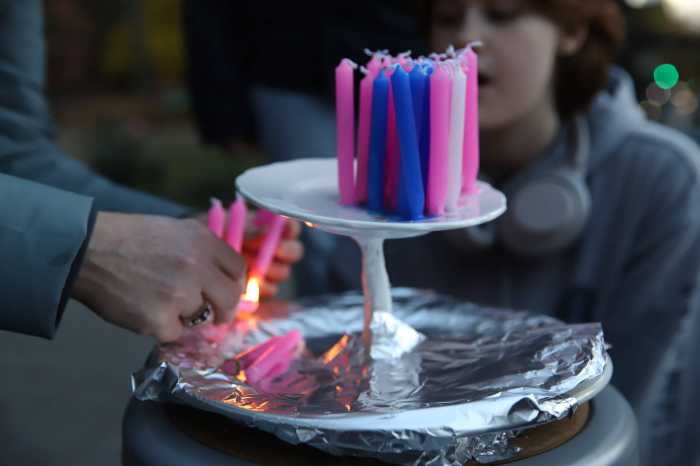Sharply divided state Supreme Court makes same-sex couples eligible for university health benefits
In a 4-3 decision announced on December 30, the Montana Supreme Court ruled that excluding same-sex partners from participation in the dependent health benefits coverage offered state university employees violates the state constitution’s equal protection requirements. But in presenting its rationale for the ruling in Snetsinger v. Montana University System, the court was even more divided that than the one-vote majority indicates, with some striking gay rights assertions articulated and rebutted.
The opinion for the court, written by Justice Jim Regnier, adopts a narrow equal treatment theory premised on equating committed same-sex couples to heterosexual couples who have not formally married, but obtain benefits by filing an affidavit of common law marriage status with the university.
A concurring opinion by Justice James C. Nelson offers a broader finding that the Montana Constitution should be construed as imposing a formal equality obligation on the government that is violated by limiting benefits eligibility to married couples.
By contrast, the dissenting opinions by Justice Jim Rice and Chief Justice Karla M. Gray contend that the majority has misconstrued—and, by its reasoning, significantly altered—the state’s laws concerning common law marriage, and improperly decided the case based on a theory not presented to or decided by the district court’s original ruling on the state’s motion to dismiss the case.
The lawsuit was filed by the American Civil Liberties Union on behalf of two lesbian couples, Carol Snetsinger and Nancy Siegel, and Carla Grayson and Adrianne Neff. Snetsinger and Grayson are employees of the state university and claim that their equality rights are violated because their domestic partners cannot obtain health insurance coverage on the same-basis as opposite-sex partners of employees. Under the university’s policy, dependents of employees may be covered by the university’s health care employee benefit plan, with the total cost for participation paid by the employee—thus an extension of coverage to dependents does not cost the university anything.
The main benefit to the employees is that participating in the larger group plan is less expensive and more easily available than purchasing health insurance coverage as an individual.
The university limits eligibility to an employee’s “lawful spouse” and dependent children. An opposite-sex couple need not be formally married under the Montana domestic relations statutes—they can qualify by filing a Declaration of Common-Law Spouse, referred to by the court as “affidavits.” Montana, unlike many other states, not only still permits common law marriage, but even provides a statutory system for common law couples to formally declare their “common law marriage.” At the same time, courts and other government agencies can still recognize the existence of a common law marriage even in the absence of such documentation.
Regnier, in his majority opinion, found that same-sex domestic partners are “similarly situated”—which is a key determination in equality litigation—to opposite-sex couples who have not formally declared their common-law marriage status but who file the paperwork with the university to qualify for spousal benefits coverage.
The university argued that its system limiting eligibility to opposite-sex couples whose marriages are either formally established under law or evidenced by the filing an affidavit with the university is “inherently rational.” Because the case does not involve a “fundamental right,” the university can defend its policy on a rational justification basis.
Regnier instead characterized the policy as “inherently flawed.”
“The policy allows unmarried opposite-sex couples, who may only have a fleeting relationship, to receive health insurance benefits by signing an Affidavit,” he wrote. “Presumably, a couple who declines to sign a statutory written declaration of marriage without solemnization, and instead signs the Affidavit provided by the University System, may choose not to marry at all, but rather may choose to sign a document in order to receive employment benefits.”
In Regnier’s view, couples who file the affidavit with the University rather than file the statutory written declaration are not necessarily in a common-law marriage relationship, because, were a court to examine the circumstances of their relationship later, it might determine that they did not qualify for such recognition. In fact, he suggested that some of those who file the affidavit to get the benefits might be astonished that anyone would consider them to be “married” as result.
Regnier concluded that the legal status of unmarried opposite-sex couples who sign affidavits in order to get benefits and same-sex couples is the same, and there is no rational basis for treating them differently.
“The University System’s policy violates equal protection of the laws under the Montana Constitution by impermissibly treating unmarried same-sex couples differently than unmarried opposite-sex couples,” he wrote.
This is a particularly significant statement because, unlike the federal Constitution or most state constitutions, the Montana Constitution specifically applies its equal protection requirements to all entities in the state, not just the government. This ruling would presumably apply to private sector businesses that premise eligibility for benefits or services of any type on spousal status and are willing to accord spousal status to unmarried opposite-sex couples.
While signing on to Regnier’s opinion, Justice Nelson also wrote separately because he saw this case as a lost opportunity to make an important advance in the law of gay rights. In a concurring opinion full of stirring rhetoric, and taking potshots at Montana voters for passing an anti-gay marriage amendment to its constitution in the November election, Nelson insisted that gay people in Montana are entitled to formal equality in every respect under the law, that the University’s policy discriminates based on sexual orientation and offends the “human dignity” of gay people and that the state constitution’s three-part equal protection provision should be broadly interpreted to forbid any policy that offends human dignity in any way. He noted that when Montana adopted its current constitution in 1972, the drafters consciously borrowed the human dignity phrasing from international human rights law, intending, in his view, to adopt a much more sweeping restriction on government action than that embodied in the federal Constitution’s due process and equal protection clauses.
Using this kind of human dignity theory, for example, the European Court of Human Rights ruled that transsexuals must be legally recognized in their acquired gender and allowed to marry in that gender, moving Britain recently to adopt an extraordinary gender recognition statute.
“Unequal treatment based on sexual orientation is an affront to the inviolable right of human dignity,” Nelson wrote. “Government policies that allow or require such treatment are, in my view, per se unlawful under the dignity clause of Article II, Section 4.”
No other member of the court signed Nelson’s concurring opinion, which was harshly ridiculed by Justice Rice in his dissent and more gently dismissed by Chief Justice Gray.
Rice devoted a substantial portion of his dissent to criticizing the court’s characterization of Montana common law marriage. He argued that the court was incorrect in stating that common law marriage without a formal written declaration does not exist as a status until reviewed by a court, usually when the relationship is terminated and property needs to be divided. He also found that Nelson’s expansive approach effectively gives the court a political veto over any government action that it believed was offensive to human dignity, an anti-democratic judicial power that he found inconsistent with American representative democracy.
Gray’s dissent echoed these concerns.
Because the court premised its ruling solely on an interpretation of Montana constitutional and common law, there is no basis for an appeal by the state to the U.S. Supreme Court. This decision is final unless the state can persuade the court to reconsider its ruling or the people of Montana overrule it by changing their constitution. Failing that, the University System must immediately devise a mechanism to make it possible for same-sex domestic partners of its employees to participate in the health benefits program, and presumably any similar programs.
In news reports following the decision, the state’s commissioner of higher education indicated that the University System would take steps to comply with the ruling.
gaycitynews.com



































